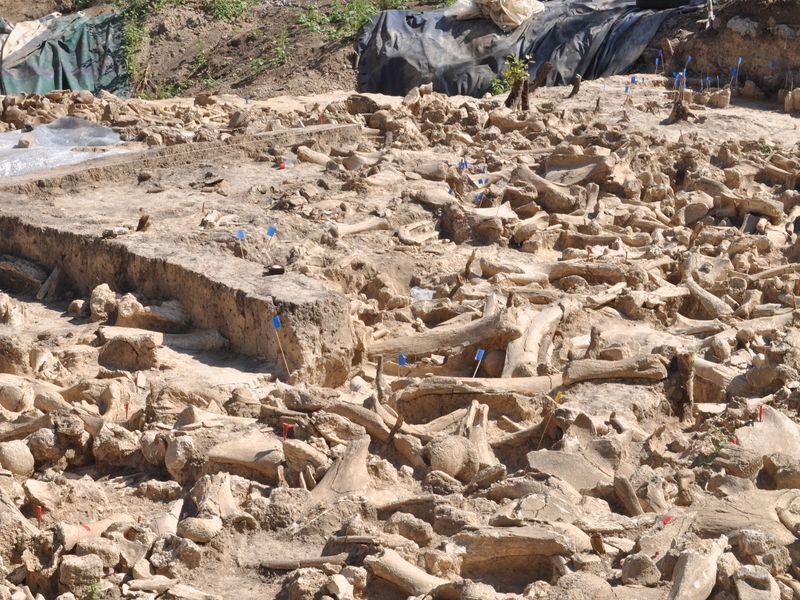
Comment: It is perhaps (a little) less perplexing when you realise that back then the area wasn't "frigid" at all and in fact its climate was temperate. See Pierre Lescaudron's Of Flash Frozen Mammoths and Cosmic Catastrophes for more.
"Clearly a lot of time and effort went into building this structure so it was obviously important to the people that made it for some reason," says Alexander Pryor, an archaeologist at the University of Exeter (U.K.). He is the lead author of a new study published this week in the journal Antiquity describing the find at Kostenki, a place where many important Paleolithic sites lie clustered around the Don River.
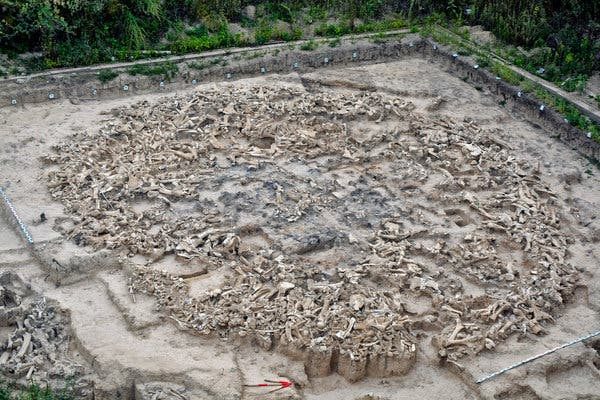
To some, though, the grandeur of the structure suggests more than practical significance. "People have also speculated a lot about a likely ritual element to this and it's really hard to say what that might have been," Pryor adds. "Ritual is embedded in human lives in all sorts of ways. The fact they might have designed a structure of this type as part of both their ritual and their sustenance activities is very reasonable."
Mammoth-bone buildings are well-known to archaeologists. Similar structures have been found across Eastern Europe, albeit on a much smaller scale, a few meters in diameter. These sites, including others found at Kostenki during the 1950s and '60s, date back as far as 22,000 years. Researchers have generally considered them to be dwellings or "mammoth houses" that helped their builders cope with frigid temperatures near the nadir of the last Ice Age. The new structure (first discovered at Kostenki in 2014) is 3,000 years older.
"What a site!" says Penn State University anthropologist Pat Shipman, who wasn't involved in the research. "I am completely intrigued as these remarkable finds differ meaningfully from previously discovered ones and can be more carefully and fully studied with modern techniques."
The site stands out most obviously for its scale. "The size of the structure makes it exceptional among its kind, and building it would have been time-consuming," says Marjolein Bosch, a zooarchaeologist at the University of Cambridge. "This implies that it was meant to last, perhaps as a landmark, a meeting place, a place of ceremonial importance, or a place to return to when the conditions grew so harsh that shelter was needed," Bosch was not involved with the new research on this " truly exceptional find" but has personally visited the site. Indeed, the structure's sheer size makes it an unlikely everyday home. "I cannot possibly imagine how they would have roofed over this structure," Pryor said.
The smaller mammoth houses feature more definite cooking hearths, and they contain the remains of reindeer, horse and fox, which suggests the people in them were living on whatever they could find in the area. The new mammoth bone structure lacks evidence of other animal remains. "It's almost exclusively woolly mammoth remains and that is one of the interesting things about it," Pryor said.
"With no other animal bones, this doesn't look much like a dwelling where people lived for a while," Shipman added.
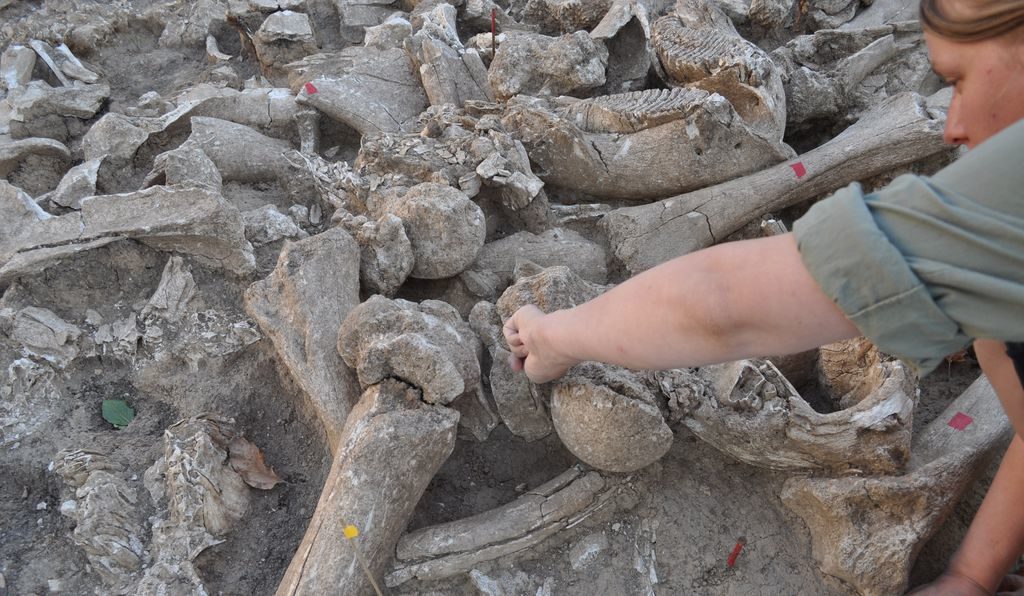
Tree ring widths in the charcoal are narrow, suggesting the trees probably struggled to survive in that landscape. Previous studies suggested that even on the Ice Age's arid steppes, coniferous trees would have endured in forests stretching along riversides like those close to Kostenki — a draw for people looking to survive.
Still, if people weren't living in the structure, then why did they make fires?
"Fire in the past can be seen as a tool much the same as chipped stone implements and worked bones are," Bosch says. Fires provided heat and light, barbecued and roasted food, dried meat for storage and processed glues for stone-tipped tools. "Here, the fires were lit inside a structure and its use as a light source seems intuitive," she says. "If the authors are correct in their assumption of its use as a place for food storage, it may also have been used to dry meat." There may be ways to test these ideas. Finding drops of fat on the floor, for example, could show that meat was dried over the flames.
Comment: Until they find evidence of tool making or drops of fat the above is just speculation.
The local diet also appears to have featured a smorgasbord of vegetables. By using water and sieve flotation techniques, the team discovered pieces of plant tissue among the charcoal. "This is the first time we have a plant food component discovered in any of these structures," Pryor says. His team hasn't identified specific species yet but notes that the tissues are like those found in modern roots and tubers such as carrots, potatoes or parsnips.
The astounding assemblage of bones from more than 60 mammoths raises the question: Where did they all come from? Scientists aren't sure if the animals were hunted, scavenged from sites of mass deaths or some combination of the two.
"There must be something about the topography of the site that makes it a place where, over and over, herds of mammoths are coming through and can be killed or will be killed naturally, like at a river crossing," says Penn State's Pat Shipman. "I can imagine no way [these] people could possibly kill 60 mammoths at a time, because proboscideans (the order of mammals to which both mammoths and living elephants belong) are smart and catch on if members of their herd are being killed, even with modern automatic weapons."
Further studies of the mammoth bones will yield more clues about their source. Some were arranged in the same order and position as they were in the skeleton. "This means that the bones were brought to the site as body part which some soft tissue (skin, muscle, and tendons) still attached," Bosch said. "Therefore, they must have been transported before carnivores had the chance to eat and clean the bones. This implies that the builders had early access to the mammoth remains."
Shipman adds: "I want to know if the bones have been processed or transported or if we are looking at whole skeletons or carcasses piled up for future use. Moving a dead mammoth cannot have been easy even if it was largely de-fleshed."
However the mammoths got here, their presence was crucial to the humans living in the area. Lioudmila Lakovleva of the French National Centre for Scientific Research notes that "the complete settlement shows several mammoth bone dwellings, walls, enclosure, pits, working areas, hearths, dumping areas and butchering areas," she says.
Kostenki was a focus for human settlement throughout the last ice age, Pryor said: "It's a huge investment in this particular place in the landscape." His team has some theories as to why. "There's evidence that there were natural freshwater springs in the area which would have remained liquid throughout the year," he says. "That warmed water would have drawn animals, including mammoth, and in turn attracted humans to the same spot."
While the site raises many intriguing questions, Pryor said that it already tells us something certain about the people who built it.
"This project is giving us a real insight into how our human ancestors adapted to climate change, to the harshest parts of the last glacial cycle, and adapted to use the materials that they had around them," he said. "It's really a story of survival in the face of adversity."
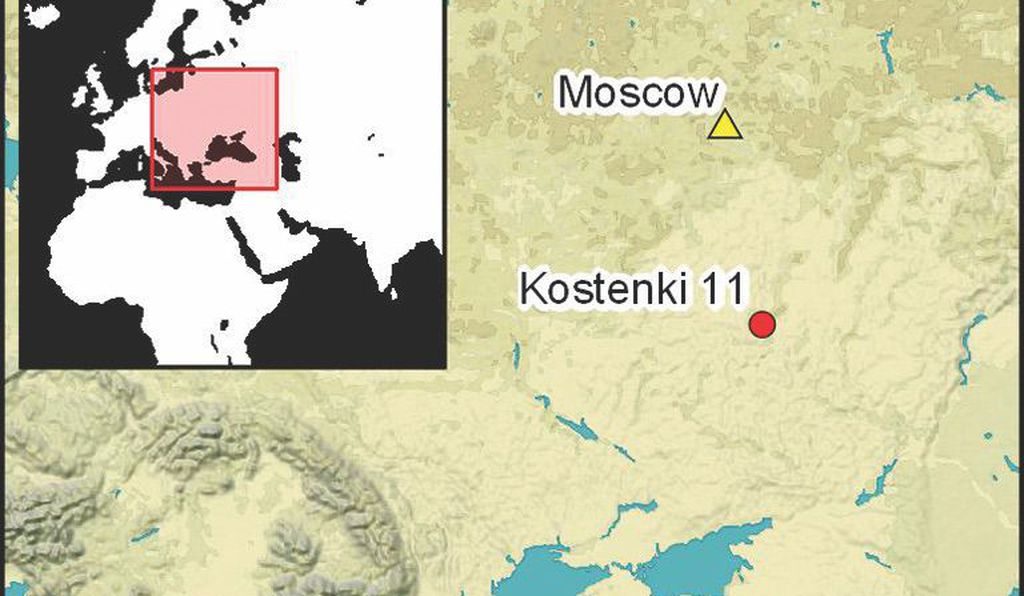
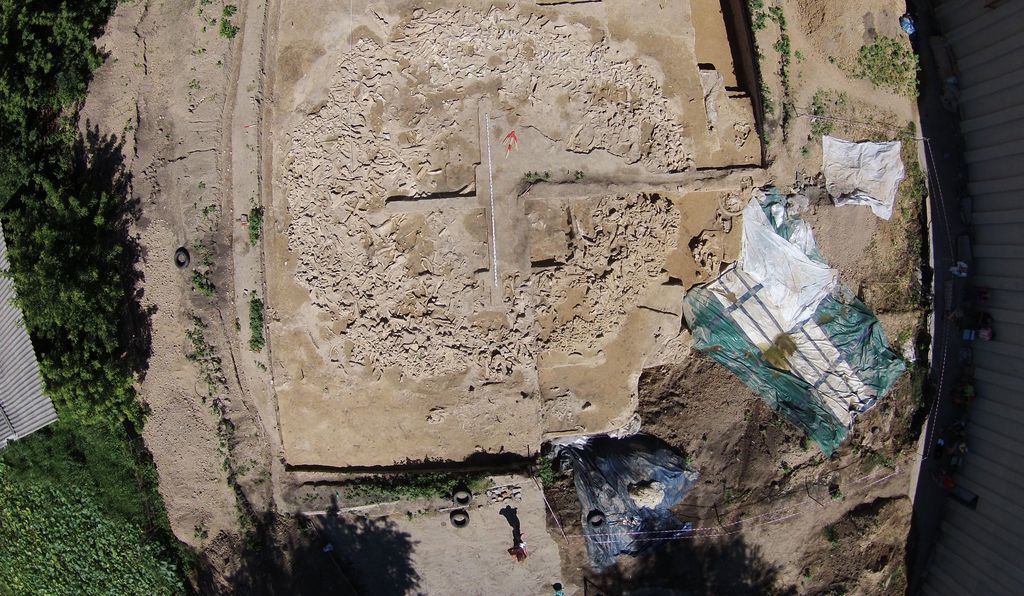
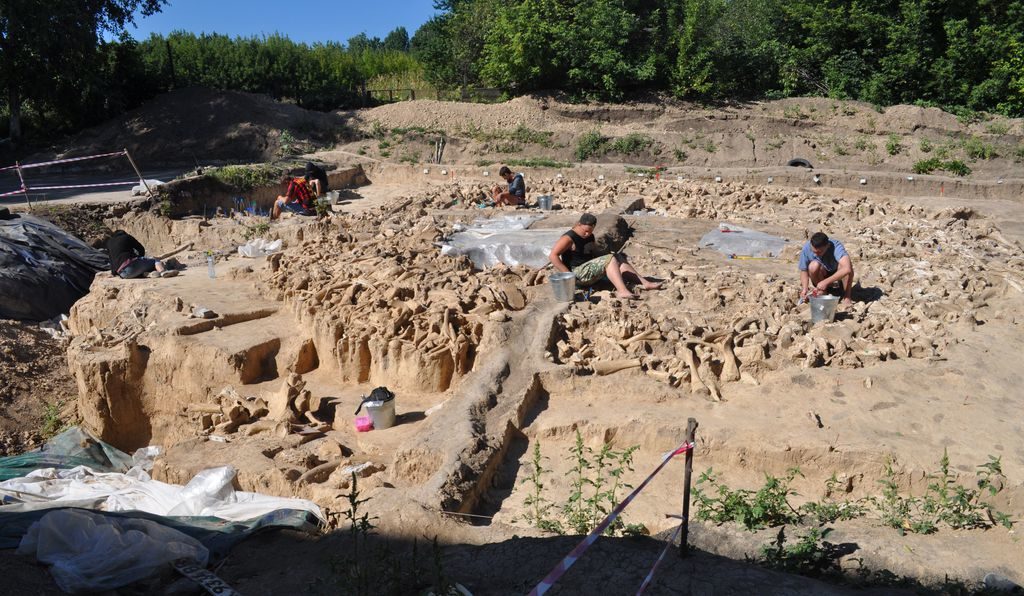



Comment: See also: